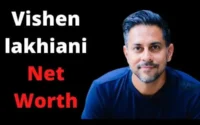Does Ryan Gosling Die in Drive | Drive Ending Explained
In writing about the history of cinema, the Nicholas Winding 2011 film, “Drive,” has been easily imbedded with an indisputable masterpiece. Unlike other controversial films by Refn, ‘Drive’ can fuse up electrifying visuals and music that pulsates at its heartbeat while avoiding any classification within the Western genres. Under the dynamic narratives runs a love story that contradicts the traditional action hero idiom. But the outcome of this movie is brilliant as it creates so many questions regarding the real fate, always the unnamed Driver of Ryan Gosling.
The Driver’s Inherent Dilemma
The Driver is at the centre of Drive, an unnamed protagonist enmeshed with veteran mobster Bernie Rose. The story gets very confusing around the time when Driver falls in love with next-door Irene, played by Carey Mulligan, and moves into her dark world because of UKO Standard Gabriel, who used to be an ex-convict. The film shows the Driver’s ambivalence towards growing a normal family and leaving the criminal world he is in. Key to this internal struggle is the illustration portrayed by a shark watching movie sheds with Benicio, Irene’s son, symbolizing Driver thinking he cannot change his violent character.
Symbolism and Metaphor
Symbols and metaphors play a significant role in understanding the intricacies of the ‘Drive’ narrative. As personified through the iconic jacket of The Driver, the scorpion resembles an old fable on how a scorpion and fatigued frog met exhaustedly, trying to make it across the river using its back. The story told in the movie is underlying that a person’s nature cannot change. This motif becomes crucial in understanding Driver’s character, especially when he clashes with moral dilemmas and violent situations.
The Elevator Brawl: A Cinematic Revelation
The key elevator fight portrays the internal battle for supremacy of the Driver himself. In this scene, though, he gets to experience a brief normality with Irene before expressing himself and revealing who he is in his fight against thugs. In contrast, the fact that he is characterized by tenderness and violence illustrates how there are two aspects to his nature – one almost inescapable.
The Ultimatum and Betrayal
Throughout this story, Bernie Rose gives Driver an ultimatum–he is to protect Irene and Benicio for money. The Driver obliges, but his call to Irene seems a premonition of what may await him. Since Bernie stabs him, it is clear that the driver expected a backstab. On the other hand, ensuing scenes that hint at capture by the wounded main character imply a pragmatic reaction blurring the line between a hero and an antihero.
Interpreting the Final Drive
In the final scenes, this ambiguity over Driver’s fate grows. Others think his miracle appears to be a dream, an escape towards the imagined heaven of self. But blood on the hand and lack of dream-like cues work against this interpretation. Although he suffered serious wounds, the Driver’s departure—abandoned dirty money as it was—may well suggest an intention to protect Irene from further danger.
Conclusion
“Drive” is a masterpiece of cinema that goes beyond all canons for cinematography and offers viewers an immersion in its depths. It is an open ending, which makes interpreting it quite difficult. In its literal presence and as a symbolic journey, the film’s strength is that it engenders thought and discussion. With repeated viewings of Drive, further metaphorical layers unfold, and the movie becomes one of cinema’s triumphs in this century.
Got stuck in a game? Don’t worry, Steve is here to solve all your queries and give you some hacks about your favorite game.
